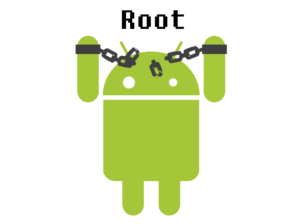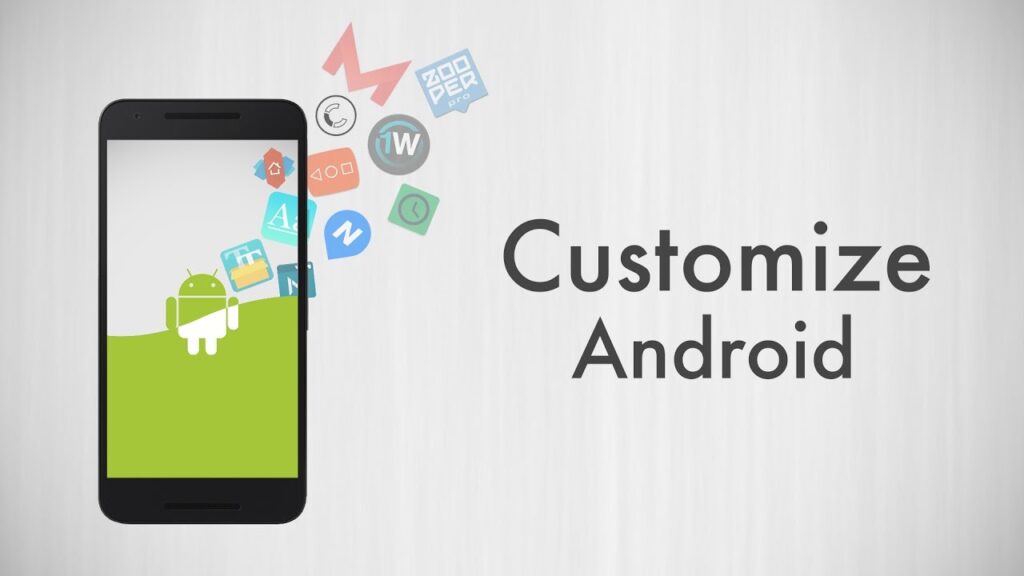Table of Contents
Rooting your Android Phone
What is Android Rooting?
Rooting is the process of obtaining full admin access also known as root access to your Android device.
This topic was very popular couple of years ago when bad Android software was the norm. Manufacturers and carriers would pre-install useless apps that wasted data, storage and battery life. And as you can imagine the user experience was bad all around.
Although, Android does allow you to uninstall or disable most of the bloatware apps, you can take it a step further with root.
Now don’t get me wrong. Root is not used only to delete unwanted bloatware from your smartphone. Rooting your Android OS opens it up to a world of customizations.
Users would often perform rooting with the goal of overcoming limitations that carriers and hardware manufacturers put on their devices.
Android root control is just like having full admin access on your Windows PC, Mac or your Linux computer. Root access on your phone gives you the permissions to change anything on it. And rooting is how you get complete access to everything on your Android operating system.
As time passed by, Android became more and more refined rendering the rooting process obsolete. But there are still many valid reasons why you would like to root your Android smartphone.
Top 10 Reasons to Root your Android Phone in 2021
Android is one of the most open, versatile, and customizable mobile operating systems out there. And it is getting better and better with each new release. Therefore, rooting your phone in 2021 may not be for you. But you would be surprised with what you can accomplish with just a little bit of work.
Here are the top 10 reasons why you should consider rooting your Android phone
1. Battery Improvements
Chances are that your phone manufacturer or carrier pre-installs applications on your new smartphone. Apps that you would not normally use. This bloatware is running in the background draining your battery. Although some of them could be easily removed, others might need a root access to do so. There is also the possibility to hibernate an application that you rarely use. This in turn would prevent battery consumption in the background.
Having root access to your Android device will provide you with an option to hibernate such apps. Or you can simply delegate that responsibility to a third-party software. Either way, hibernation is a great option for apps that you don’t use frequently.
Related Posts:
2. Remove any application from you Android device
I usually remove such applications right from the start. They are useless. Android does allow you to uninstall or completely disable most of the bloatware apps, but sometimes that is not the case. Rooting your phone will give you that option to completely remove any application from your Android smartphone.
3. Custom Android ROMs
Android ROM file contains executable instructions of an Android OS and affiliated apps. It is basically a system image. On your phone you already have it installed. But you also have an option to choose a custom Android ROM that comes from a third party. So, a custom ROM is nothing but a custom version of Android for your device.
Just like you can change OS version on your PC, you can do that on your phone as well. But you will need root access and permissions. This is probably the biggest reason why you would like to root your Android device. Installing a custom ROMs such as LineageOS, CarbonROM and Paranoid Android is something a lot of users do. Mainly because they are not completely satisfied with the software on their device. Custom ROM can give you a completely new experience as well.
4. Android Customization
If you are into customization then you have chosen wisely. Android provides users far more features and customization options than any other OS out there. Customization is a huge deal in the Android community as well. Even without rooting your phone, Android allows you to change all kinds of things. Then there are apps that you can find on Google Play Store that takes customization a step further.
Add rooting, and nothing is off limits.
You can change the boot logo, install custom system font, use different lock screen and so much more. Another way to take customization process to the max is to install a custom ROM. But do note that Android already provides rich customization features out of the box or through root access, so installing a custom ROM for customization purposes only might not be the best idea.
Related Posts:
5. Overclock Android Phone
Overclocking is an old practice. It involves “overclocking” the processor so that it operates faster than what the manufacturer intended. In all honesty this is something that a user would do a long time ago. Usually with underpowered old devices. This one isn’t really necessary nowadays. But still, to overclock your CPU a root permission is required. Either way, if you decide to boost up your phone speed, gaining a root access is a must. But please note that this could negatively impact battery life and device health.
6. Android Automation
Tasks that require manual toggling can be automated. Stuff like turning off GPS, switching between networks, or turning the display off can be automated if you have root. One of the most popular apps on Google Play Store for automation is Tasker. It doesn’t generally require you to have root access, but you can do a lot more if you have it.
7. Magisk
Magisk is a tool that allows you to use root access. It is also a new root authorization system. It was developed in 2016 by XDA developer topjohnwu. Magisk is an alternative to the long-standing SuperSU, but it’s much more than just a root method.
Magisk is known as the “no change system” root method. It is actually a way to change the system without actually changing it. Changes are safely stored in the boot partition rather than replacing the actual system files. This is the most important feature of this tool. The changes may not be detected by Google SafetyNet, as the original system files remain unchanged.
The great thing about Magisk is that it makes it easy to customize your phone. Developers can create modules and other users can easily apply them on their device.
Related Posts:
8. More powerful Apps
Root gives applications the ability to do more. Change things on a higher system level. But anytime you choose to do so, obviously it comes with a certain amount of risk. That is because a rogue app with root access can do a lot of damage to your phone. But there are apps that can do so much more by gaining root access. To see what is out there, simply navigate to Google Play Store and search for “root”. You will be pleasantly surprised by all the various applications. From CPU speed booster to Root Uninstaller, Fontster, Color Changer, Kernel Manager and so much more. Please note that before using these applications your phone must be rooted.
9. Root Backup for Android
With or without a root access you can back up a lot of your files and folders. Rooting your Android phone will allow you to back up everything. Even system preferences and entire applications. You can see how backing up system and application preferences will come in handy. Instead of setting everything up all over again, you can simply restore them with a click of a button.
Having a restore point on your PC makes live so much easier. This is because if anything goes wrong you can revert back your PC to exactly how it was set up at the time of the backup. NANDroid is an application that offers the exact same functionality for Android phones. Titanium Backup is also a very good Android application that basically does the same thing. But both of them require root access.
10. Ad Blocking
If you have installed any free application for your Android phone, chances are you were bombarded with ads. But they are necessary. Ad revenue a lot of times is the only source of income for an Android developer. Even though there are in-app purchase options or a premium version of the app you are using, most of the users do not pay for that. If the ads are placed correctly, they will not bother the user. But most of the times, that is not the case. As a result, users want to remove them.
Android OS-wide ad blocking is possible. But only on a rooted device. While it is possible to block ads without rooting, with the usage of a VPN, there is even a better option. With applications like AdAway, any time an app requests an ad, AdAway will direct them to an IP address which does nothing.
Rooting your Android smartphone can help you block OS-wide ads.
Root Manager Client
Android OS is based on a modified version of the Linux kernel. As well as some other open-source software. The root is the username or account that by default has access to all commands and files on a Linux operating system.
Gaining root access on Android phone is also similar to running Windows as an administrator. Rooting your Android phone gives you a full access to the system directory. But you can also change the way Android OS operates.
Rooting with Magisk
Usually rooting is accompanied by installing a client like Magisk.
This way when an app requests root, you have to approve it using the root manager. But Magisk is not just a gate keeper. It is backed up by a huge developer community. This community develops modules for Magisk. So, if you would like to change the system theme on your phone, manually back-up data, boost the device CPU and much more, with root you can do that.
Why Magisk?
Android is shipped with Google SafetyNet. SafetyNet provides a set of services that helps protect apps against security threats. Including device tempering. As a result, it blocks certain apps from working properly, when it detects that the system has been tempered with.
Although SafetyNet is an important security measure, it can be overly aggressive. As a result, if your phone is under root, certain application might now work properly. Well, Magisk allows users to have root access and still use apps like Google Play or Netflix without a problem.
What’s even better is that Magisk is described as a “systemless” root manager. This is because the changes are stored in the boot partition rather than directly modifying the system. So, whatever happens you can easily go back to an unrooted system. And since the original files remain unchanged, modifications can go undetected by Google SafetyNet.
To avoid having problems when rooting your phone, use a client like Magisk. Basically, it will allow you to have root access and prevent from Google SafeNet blocking some of your installed applications.
Magisk Manager
But Magisk offers a lot more than what we described. Root is just one of the many modules you can install. Magisk is backed up by a huge development community. They create modules which are installable modifications for easy customization of your Android phone. You can choose from a lot of different modules such as ad-blockers, emoji replacements, CameraAPI2 enabler and much more.
You can find these modules in the Manager app from the slide-out menu.
Is it safe to root your Android Phone?
Rooting your Android phone comes with great benefits. But it also comes with a major drawback. It is a double-edged sword. Root access allows you to change anything. But root access also allows malicious software to exploit your device. In other words, root access compromises your phone, from a security standpoint.
For this reason alone, most Android phones are not designed to be rooted. SafetyNet is the first line of defense when it comes to a device that has been tampered with or compromised by hackers. Applications that handle sensitive data like payment processing, refuse to work under root mode.
Applications like Magisk supports hiding root, but that won’t always work. Google works very hard to secure your Android phone. So Magisk is in a constant game of cat and mouse with Google.
Should you root your Android phone?
Rooting a phone is a user’s choice. You always have to weigh in the benefits versus the drawbacks. With root access you gain a lot in terms of control, access, customization and automation of your Android smartphone. But you lose the built-in security.
Rooting your phone might also void your warranty as well. Technically you opt out of official updates by doing so, because it is very difficult to install them.
So, should you, do it?
[custom-related-posts title=”Related Posts” none_text=”None found” order_by=”title” order=”ASC”]
Root or Not to Root
Couple of years back it was very easy to root Android. But now it is not so much. Gaining root access to an Android device is a little bit harder than it once was. This is because all exploits that lead to rooting your phone are the same security holes that are used by malware to take over a device and steal data. So naturally, with each Android update Google patches those security issues. As a result, rooting your phone is getting a little bit harder with each new Android update.
Bottom line, rooting is fun. Being able to customize your smartphone leads to better personalization of the device. Or at least it brings it one step closer to whatever you have envisioned. Task automation and system-wide ad blocking is also a good enough reason for me to root my phone. But I would suggest thinking about what you are potentially giving up from.
Conclusion
With Android 12 official release just around the corner, Google gives you even less reasons to root your phone in 2021. Android 12 brings the biggest design change in Android’s history. From the colors to the shapes, light and motion, making Android 12 more expressive, dynamic and personal.
Eventually if you decide to root your phone, make sure you know what you are doing. If you are not very familiar with Android’s tools and how to fix issues with a command line, you probably shouldn’t be rooting your phone. Because when something goes wrong, and it will at some point, it is all up to you to fix it.















MAKECOMMENT